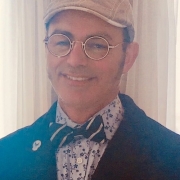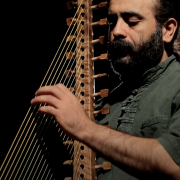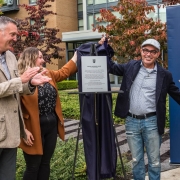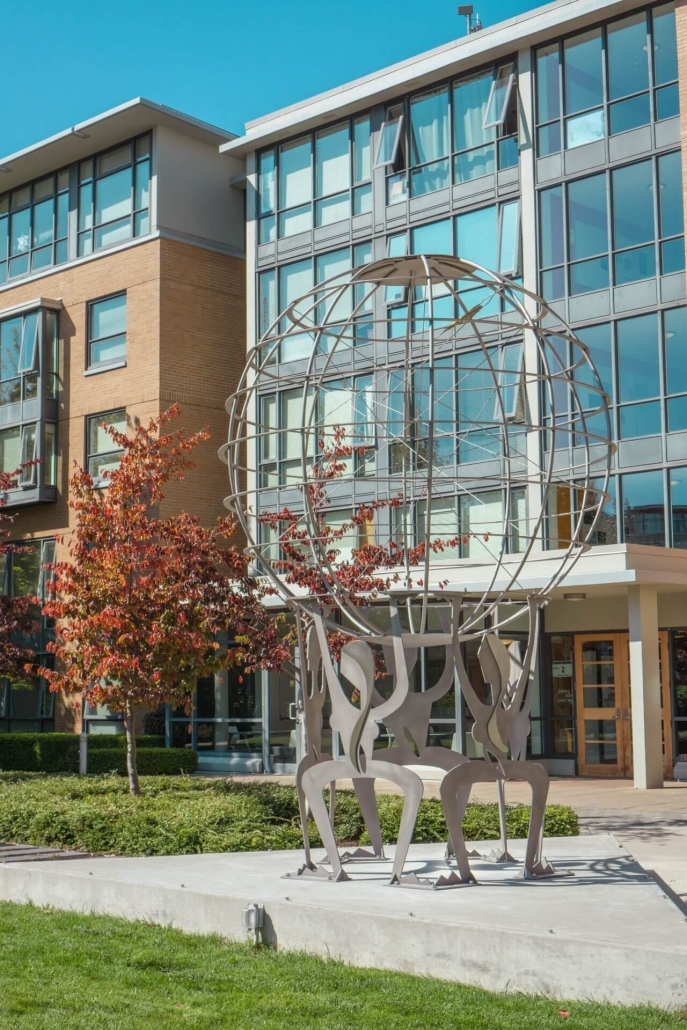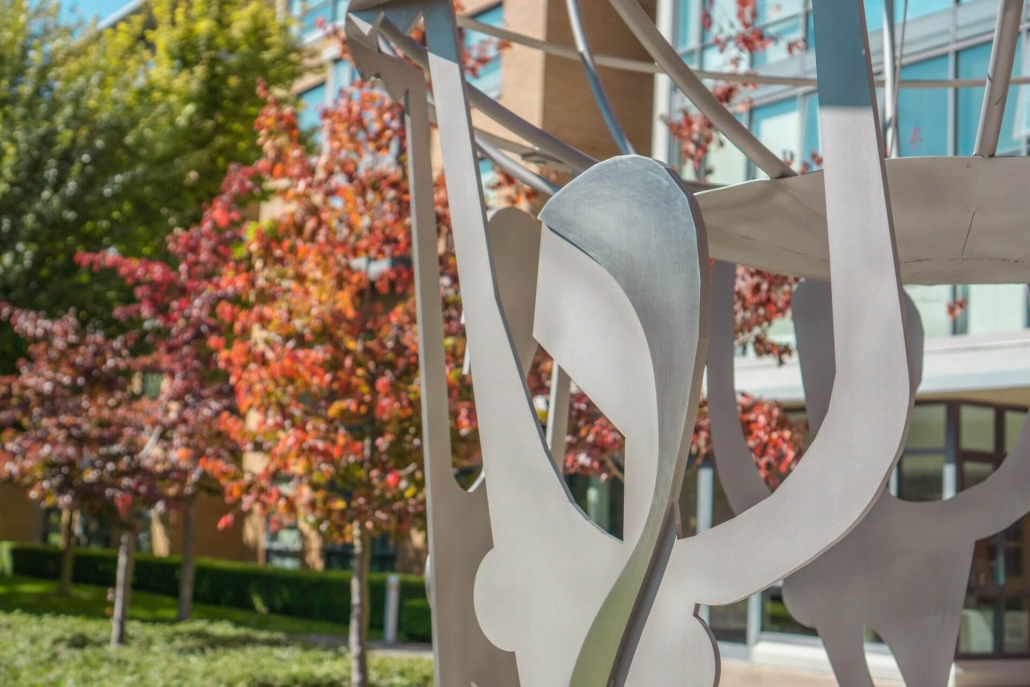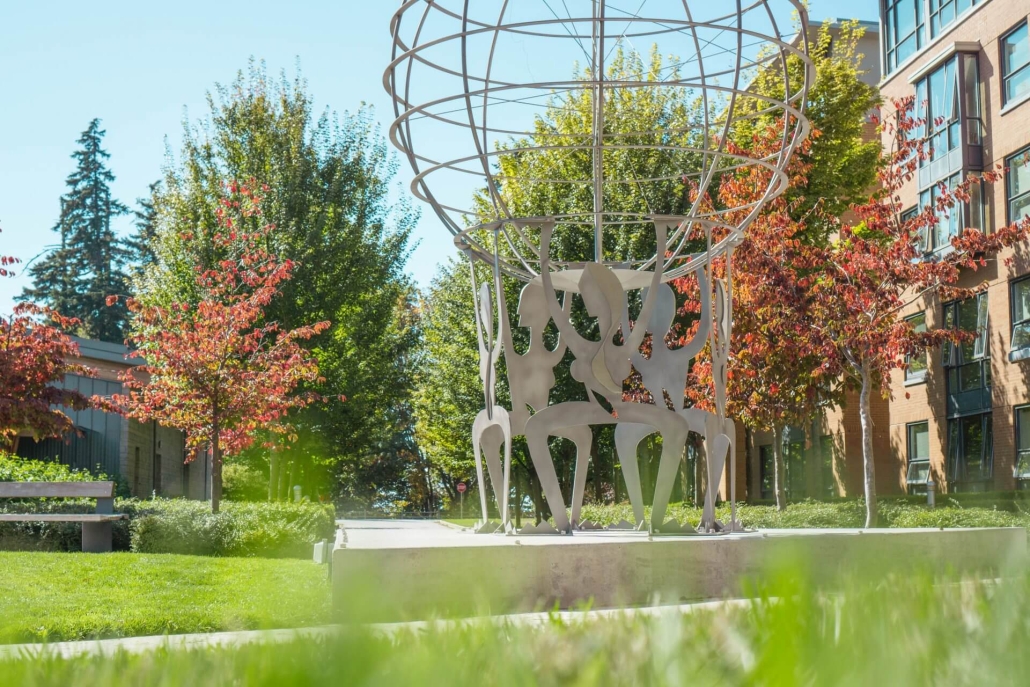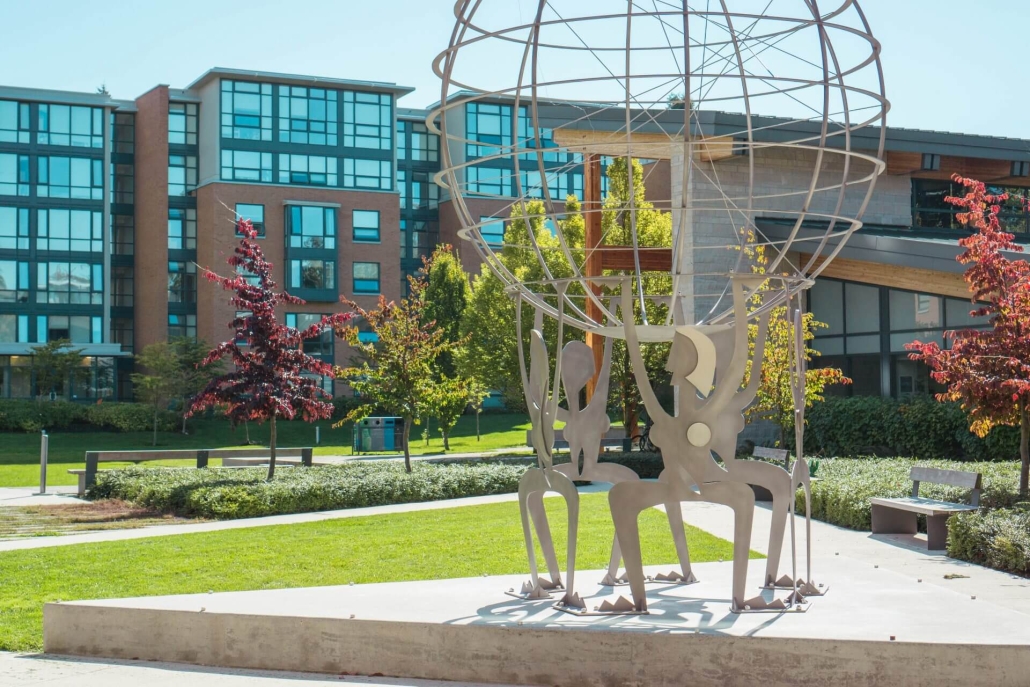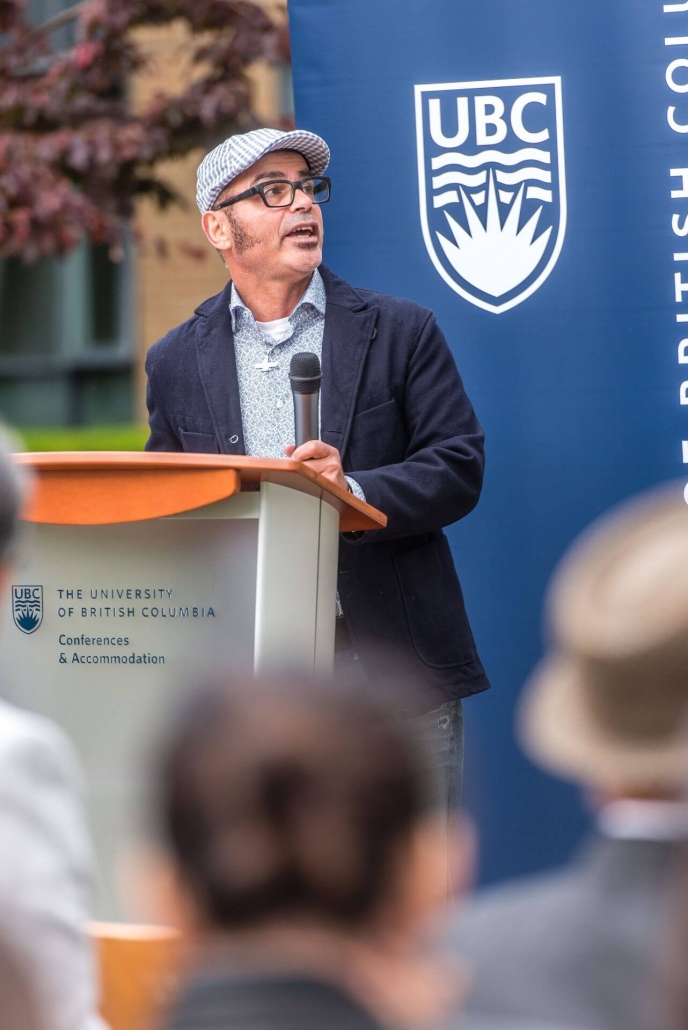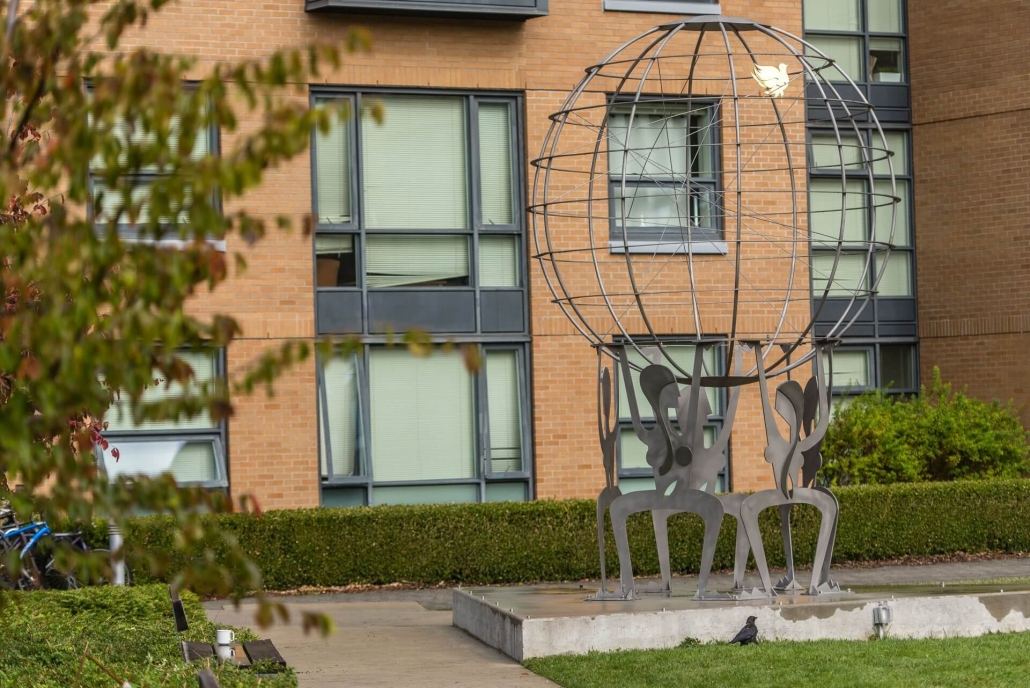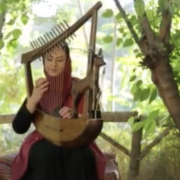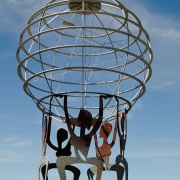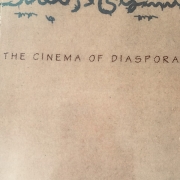Mehrad Rahbar has always been tuned in to events around him – the Iran revolution in 1979, the 1989 Montreal massacre of 14 female students and the Arab Spring that spread across the Middle East and North Africa in early 2011. He considers himself a human rights activist and is involved in various Iranian-Canadian organizations throughout the city and province.
Although he studied architecture, Rahbar says he has always been interested in painting and drawing. His work, which uses mainly acrylic and ink, is primarily composed of characters, backgrounds and symbolic gestures to represent locality – the human side, both abstract and surreal. The scriptures on his artwork are in both English and Persian.
“Everything in me exists in my painting. I basically belong to the world,” says Rahbar, 52.
The power of the third dimension
Rahbar envisioned a sculpture of women standing together, rising, and claiming equality and respect. After making a sketch, he decided his real-life sculpture would consist of five figures holding a globe, with materials including copper plates, stainless steel tubes and flat bars.
Rahbar says sculptures, a more 3-D art form, draw in a wider audience.
Inspiration
“Women’s rights are human rights. It’s not only affecting the woman and her family, but it’s my problem also,” says Rahbar.
As a male artist, he hopes to encourage more men to become interested in this movement.
Growing up in Iran, Rahbar says his father was respectful of women and very sensitive to women issues.
“This was unique in a male-dominated society [such as Iran],” he says.
Rahbar moved to Montreal in 1979 on a student visa, and earned a Bachelor’s and Master’s degree in Architecture from McGill University. He never moved back to his birth country, but relocated to Vancouver in 1996 to finish his Master’s thesis on affordable housing.
Rahbar then became a Canadian citizen, married an Italian-Canadian and had three children.
“Having a daughter changed my life quite a bit. I told her I’ll do whatever I can for women’s rights in the world,” says Rahbar.
Student-led initiative
Mike Silley, who has known Rahbar for 15 years, having attended the same school as his son, was first approached by Rahbar about the idea of a “universal sculpture” in 2008.
“We didn’t have the time or capability (at the time) to invest in such a project,” says Silley, 26, who has held a number of positions at UBC, including Alma Mater Society (AMS) Arts Representative, 2013 UBC Graduating Class Council President and member of the Board of Governors.
A few years later, in 2013, an opportunity came up for graduating students of 2013 to “leave a landmark gift for future generations,” so Silley reconnected with Rahbar.
For Silley, the project is important because of the timely subject matter that serves as a topic of discussion for both genders. Given the rates of alleged sexual assaults on UBC campus (circa late 2013), Silley says the sculpture can represent ‘gender equality as a whole.’
“The moment we start relaxing, the moment we forget what we’re fighting for, is the moment we stand to lose it,” says Silley.
After an extensive process of securing the permit to have the art in place, choosing the location itself and getting the labour for the project, the sculpture project has raised about $35,000 of the total $150,000 required. Much of the proceeds have been raised at fundraisers organized by Rahbar, Silley, university students from UBC, SFU, Emily Carr and Capilano University and the general public.
Both Rahbar and Silley say the placement of the sculpture on the UBC grounds is an amazing opportunity to educate people through art and encourage dialogue in a public space.
Rahbar says work can begin on the sculpture once the team has reached another $50,000. He is hopeful that will be in the summer of 2016.
“I can’t sleep at night. I can’t wait – I’m so excited about the project,” says Rahbar.
For more information please visit: www.whenwomenrise.org

